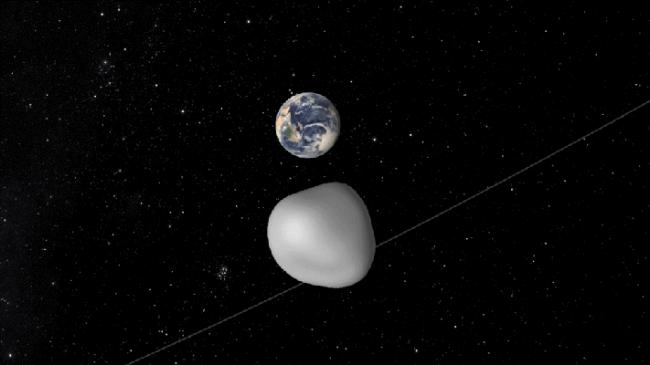
The target of all this attention is asteroid 2012 TC4 -- a small asteroid estimated to be between 30 and 100 feet (10 and 30 meters) in size. On Oct. 12, TC4 will safely fly past Earth. Even though scientists cannot yet predict exactly how close it will approach, they are certain it will come no closer than 4,200 miles (6,800 kilometers) from the surface of Earth. The asteroid has been out of range of telescopes since 2012, read the NASA website.
“Scientists have always appreciated knowing when an asteroid will make a close approach to and safely pass the Earth because they can make preparations to collect data to characterize and learn as much as possible about it,” said Michael Kelley, program scientist and NASA Headquarters lead for the TC4 observation campaign. “This time we are adding in another layer of effort, using this asteroid flyby to test the worldwide asteroid detection and tracking network, assessing our capability to work together in response to finding a potential real asteroid threat.”
Professor Vishnu Reddy of the University of Arizona's Lunar and Planetary Laboratory in Tucson leads the campaign to reacquire 2012 TC4 and sees it as an opportunity for the collaborative observation campaign to utilize the international aspect of the network. “This is a team effort that involves more than a dozen observatories, universities and labs across the globe so we can collectively learn the strengths and limitations of our near-Earth object observation capabilities,” said Reddy. The goal of the TC4 campaign is to recover, track and characterize 2012 TC4. “This effort will exercise the entire system, to include the initial and follow-up observations, precise orbit determination, and international communications.”
Scientists from NASA’s Center for Near-Earth Object Studies (CNEOS) at the Jet Propulsion Laboratory in Pasadena, California, have determined that while at closest approach, asteroid 2012 TC4 will pass no closer than 4,200 miles from Earth -- it will more likely pass much farther away, as far as 170,000 miles (270,000 kilometers), or two-thirds of the distance from Earth to the moon. These calculations are based on only seven days of tracking 2012 TC4 after it was discovered on Oct. 5, 2012, by the Panoramic Survey Telescope and Rapid Response System (Pan-STARRS) from Haleakala on the island of Maui, Hawaii. Further observations are needed to more precisely determine the asteroid’s orbit.
Asteroid 2012 TC4 may be slightly larger than the space rock that hit Earth’s atmosphere near Chelyabinsk, Russia, in February 2013. TC4 has not been seen since its 2012 discovery, when it sped past Earth at about one-fourth the distance from Earth to the moon. It has been too distant and too faint to be detected over the last five years. As it starts to approach Earth this summer, large telescopes will be used to detect it and re-establish the asteroid’s precise trajectory. The new observations are expected to help refine knowledge about its orbit, narrowing the uncertainty about how far it will be from Earth at its closest approach in October.
"This is the perfect target for such an exercise because while we know the orbit of 2012 TC4 well enough to be absolutely certain it will not impact Earth, we haven’t established its exact path just yet,” said Paul Chodas, manager of the CNEOS at JPL. “It will be incumbent upon the observatories to get a fix on the asteroid as it approaches, and work together to obtain follow-up observations than make more refined asteroid orbit determinations possible."
NASA's Planetary Defense Coordination Office is responsible for finding, tracking and characterizing potentially hazardous asteroids and comets coming near Earth, issuing warnings about possible impacts, and assisting coordination of U.S. government response planning, should there be an actual impact threat.
Image Credits: NASA/JPL-Caltech
Support Our Journalism
We cannot do without you.. your contribution supports unbiased journalism
IBNS is not driven by any ism- not wokeism, not racism, not skewed secularism, not hyper right-wing or left liberal ideals, nor by any hardline religious beliefs or hyper nationalism. We want to serve you good old objective news, as they are. We do not judge or preach. We let people decide for themselves. We only try to present factual and well-sourced news.







